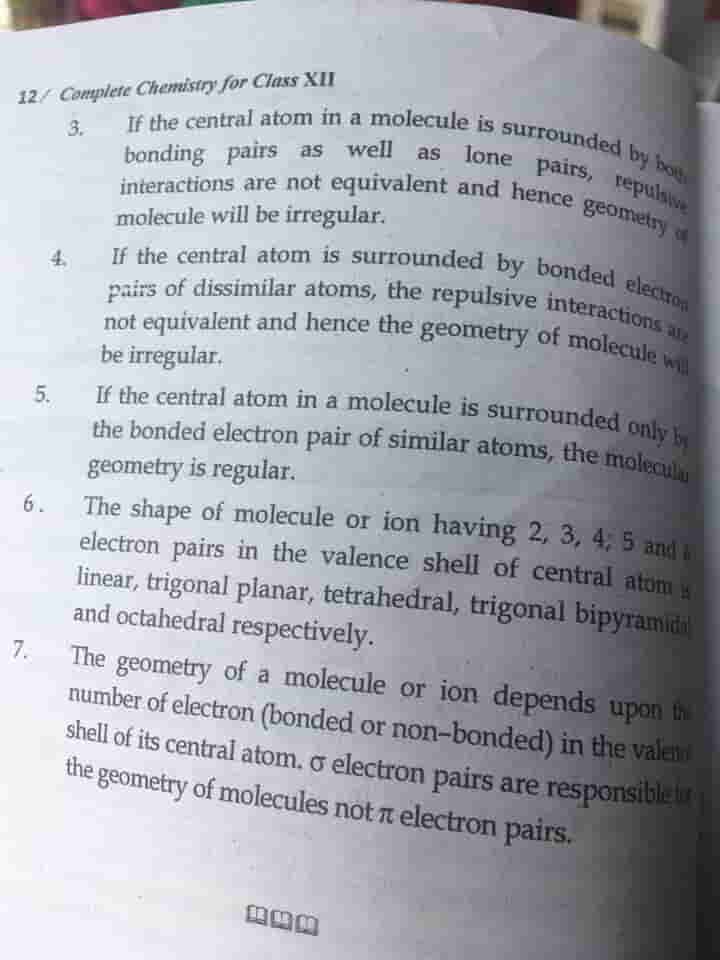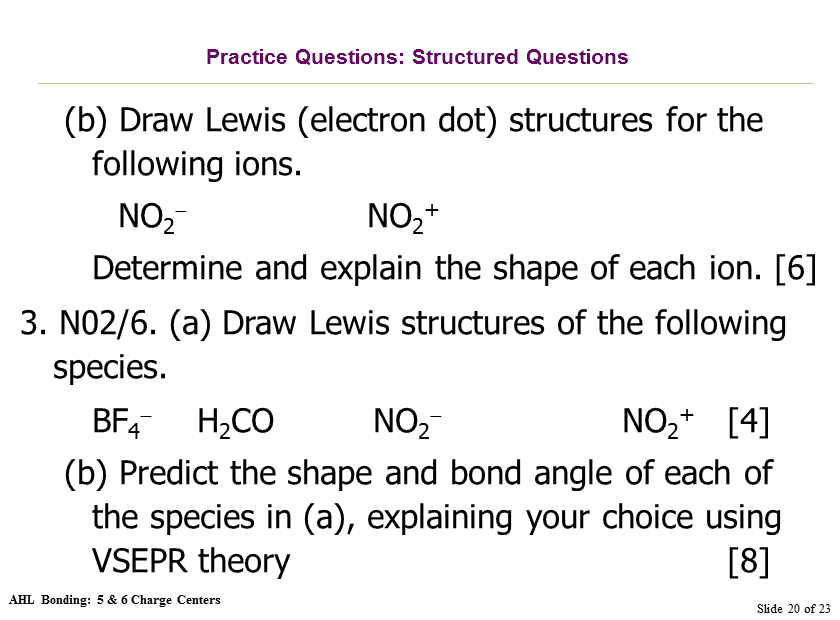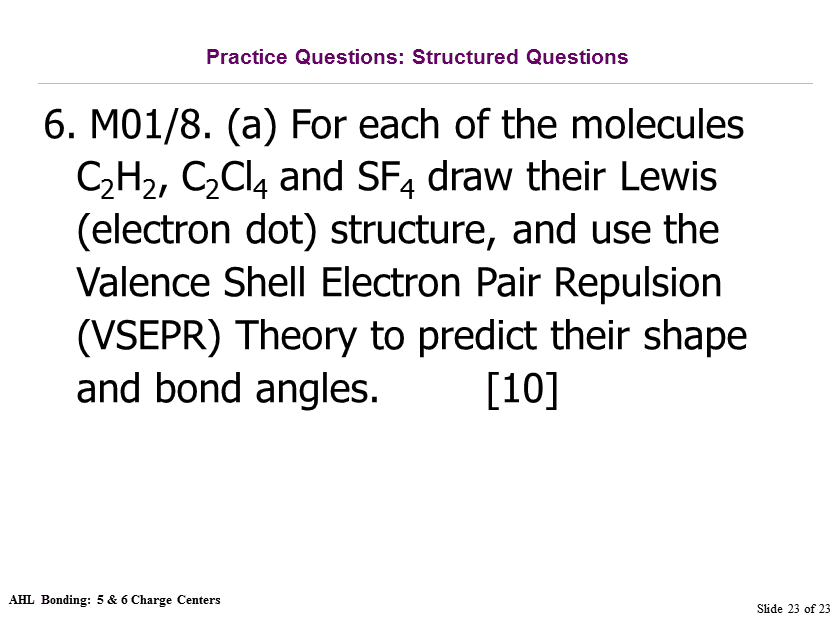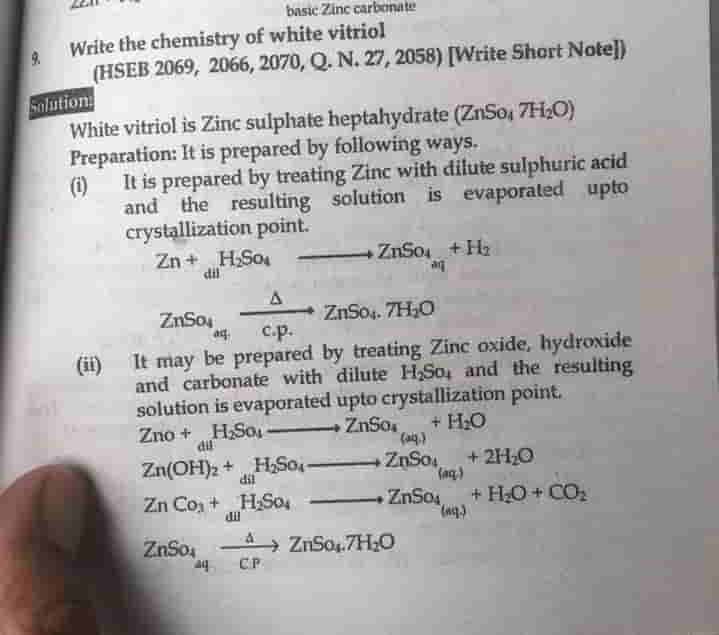Were I NOW to pretend to be a grade 11 or 12 Science student and take their upcoming Chemistry examination, I will likely not get a good grade. (The curriculum, called Ten-Plus-Two, is equivalent to the last two years of high school in the US and Sixth-form college in the UK.) That says a lot! Here’s why!
I have a BA from a college in the US with a major in Chemistry! In my first career as an international school science teacher, I taught IB Diploma Chemistry at international schools around the world for over fifteen years.
So, why would I NOT get good grades in a Chemistry examination 17-19 year-olds in Nepal take?
The questions are worded so badly and some of the key words have different meanings from how I would understand them that I would struggle to even understand the questions, forget about provide the correct answers.
Here’s an example of a question and the expected answer I found in a guide book. The question is “Write short notes on (a) VSEPR model[.]”
To begin with, what kind of a question is “Write short notes on”?!?! How do you know how much to write and what to write? The question in no way guides the student in eliciting the response its seeking. It does not indicate how many marks it is worth.
But look at the model answer. It’s almost two pages long to begin with! I definitely would NOT characterize that answer as “short notes.” As for the content of the answer, clearly the students had been taught the names of the scientists responsible for the the model — not anywhere near one of the earth shattering models developed by scientists — and the year it was developed. What would be the point of knowing all that?! I certainly didn’t know any of that nor did I ever teach them to my own students!
Some of the wording in the answer are off and also irrelevant. For instance, to point out just one, σ electron pairs and π electron pairs — as they have chosen to call them — are NOT concepts associated with VSEPR model (theory)! (If you have to know, they are associated with Valence-bond Theory!)
What would be appropriate questions on VSEPR theory, you may ask! Here are some taken from my online resources for IB Diploma chemistry students. (IB Diploma is an international curriculum for 16-18 years olds.)

The questions ask students to “draw,” “predict”, “compare,” and “account.” The second question is testing the ability of the students to APPLY their knowledge and understanding of VSEPR theory. Notice how precise the questions are in their wordings, in what they are assessing, AND in the mark allocation. The mark allocation pretty clearly indicates what is expected in response…just that you would have to know chemistry to see that.
Here are a few more. Again note the precision of the language and the very clear and transparent mark allocations. (The source of these questions is this online PowerPoint slides.)
Just to show you how the marks allocated indicates what is expected…. The question above is asking for three specific things each, about three specific molecules: their Lewis structure, their shape, and their bond angles. Allocating one mark for each the total comes out to 9. If you are a chemistry student, you would be able to guess what that remaining one mark is for. Can you? Have a guess!! 🙂 🙂
Let’s return to another question from the ten-plus-two guide book. Compare this again to the IB Diploma chemistry questions above. This one asks the students to “Write the chemistry of white vitriol.” But, it appears to be a reworded “Write Short Note [sic]” question.
To begin with, I don’t recall encountering such a question whether in my student career abroad or in my IB Diploma chemistry teaching career also abroad. To be perfectly honest, I have no idea what “white vitriol” is.
Here’s something else I didn’t know. Even as someone who majored in and taught chemistry, I did NOT know that a response to a question about the chemistry of a substance (such as white vitriol), necessitated a description of its laboratory preparation and industrial manufacture. I didn’t know that I needed to state it’s physical properties and its uses either! I really didn’t!
Again, no different from the response to the first question, the response required here is also way too long. Furthermore, the expectation is for the student to remember and regurgitate pretty much EVERYTHING they would have been taught about the chemical white vitriol! Absolutely ridiculous to say the least!
While at the outset I said that were I to take the grade 11 or 12 chemistry examination I might not get a good grade, I wouldn’t be surprised if I fail. As you may have already concluded, the questions are way too vague. While I have shared only two questions from the chemistry guide book, a lot of the rest were pretty much more of the same — convoluted and vague.
If “Write short notes on” wasn’t bad enough, I have seen questions that start with “What do you mean by”! Here are some additional REAL questions I have come across, beginning with a “What do you mean” by variety :
- “What do you mean by dependent population?”
- “How is our culture affected RDG? Define.”
- “Point out about the process of learning.”
- “What s [sic] frustration? Explain about its causes.”
The source of the above questions were a student’s notebook and an undergraduate test paper. You can find them all in the blog post Post-secondary Education: Here’s One of The Major Ways We Fail Our Students.
Apart from the horrible English, the questions are as vague as they are because meanings or denotations of the key words are different from what they actually mean in English. The wordings of these questions are probably translations of Nepali questions carried out by someone with a very poor mastery of English.
One wording has the dubious distinction of being the “best” (!!) though! And that is this: “What is your understanding of XYZ?” If you, as a test taker, were to share YOUR understanding of XYZ as PER the question, your response would be marked wrong. The response expected is one that is the same as the prescribed or the agreed upon (Nepanglish?) understanding of XYZ.
Questions with such wordings are introduced to students from when they are in primary school. I know because I have seen them in my little nephew’s notebooks when working with him on his homework (which is another issue all together).
But then again, to reiterate something I have alluded to elsewhere and something an overwhelming majority of educators in the country I have engaged with have told me: when all you have to (and likely can) teach (from textbooks of horrendously poor quality) as a teacher and all you have to learn as a student is to regurgitate, what do you do?! What can you do?! When the reputation of an institution rests mostly on their students’ ability to pass examinations such as these, what can you expect?! Teach and learn to regurgitate is all you can do, all you would do, and all you can expect.
Of course, that’s NOT it, really.
In my teacher education program, one of the most important things I have been trying to drive home is the fact that if you teach students to think critically, and to be creative, imaginative, they will — on their own — create and devise ways to commit to memory what they must in order to pass these examinations AND they will also become independent thinkers! I have taught Nepali students in their own schools and classrooms and I know that they can think, no different from children all over the world.







